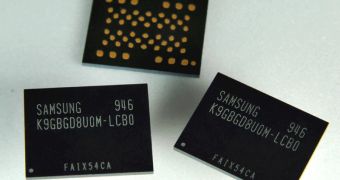Apparently, though it is not exactly a fortuitous occurrence as far as NAND Flash makers are concerned, NAND Flash chips have been getting even cheaper in the first half of November.
Those keeping track of developments on the semiconductor market will be aware that prices have been falling for months.
Both DRAM and NAND Flash chips have been getting cheaper and cheaper, for multiple reasons, most of which have to do with the difference between supply and demand.
Apparently, inventories of both DRAM and flash chips are large now that their makers have moved on or are transitioning to more advanced processes.
In fact, supply seems to actually be growing at a pace that supply cannot match, leading to the necessity of price cuts.
Apparently, according to a report made by Digitimes, growth of NAND Flash has been limited this year, especially amid lessened flash memory card and USB drive shipments.
This led to a veritable price 'free fall' during the second half of the ongoing year 2010, to the point where module makers are doing everything they can to not increase their inventories further.
For those interested in numbers, 8 Gb MLC (multi-level cell) NAND Flash memory chips got 10-14% cheaper during early November.
Likewise, the prices of 16 Gb and 64 Gb MLC products dropped more than 7% during the same period.
All that NAND chip makers can hope for now is that the abrupt drop in prices will somehow stimulate demand.
With downstream shipments showing signs of growth during October, companies are now hoping that the end-user market finally starts showing a higher interest in this market.
They are also betting on the rising popularity of SSDs (solid state drives) and on the increasing interest from the military, industrial and, of course, consumer markets in their efforts to use up their existing supply.

 14 DAY TRIAL //
14 DAY TRIAL //